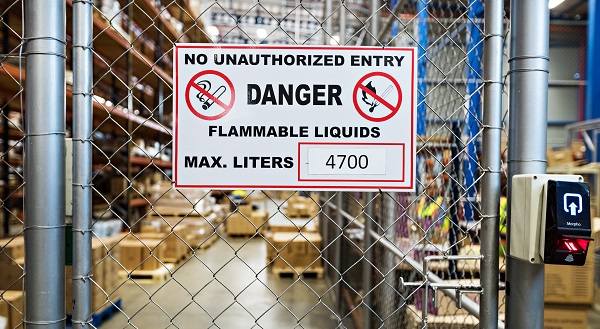According to Dimension Market Research, the global chemical logistics market is projected to reach approximately R5.6 trillion by 2033, growing at a steady 3.9% CAGR. This growth is resulting in the increasing complexity of chemical supply chains, the rising demand for specialised storage solutions, and the expansion of global trade routes.
South Africa’s chemical logistics sector is poised to capitalise on these trends by enhancing its infrastructure and adopting advanced warehousing strategies.
According to Len Pather, General Manager for the KZN Region at Bidvest International Logistics, achieving the gold standard in chemical warehousing requires strict adherence to regulations such as the Occupational Health and Safety Act, National Environmental Management Act, and Major Hazardous Installation regulations.
"Safety measures should begin with comprehensive risk identification and mitigation strategies," Pather said. "By effectively implementing risk assessments and ensuring employees understand the hazards linked to chemical storage, businesses can better safeguard employees, clients, and the environment."
Pather also emphasised the importance of continuous employee training, using Safety Data Sheets (SDS), and ensuring containment resources are available in case of incidents.
Sustainability and efficiency to drive warehousing innovation
A commitment to sustainability increasingly defines the logistics landscape. Lawrence Aldworth, National Compliance & Risk Manager at Bidvest International Logistics, highlighted key sustainable practices for 2025. "Adopting ISO 14001 and ISO 45001 standards is vital for ensuring sustainable operations. Additionally, investments in energy-efficient technologies, such as electric and hydrogen-powered transport fleets, will help chemical producers meet stricter environmental regulations."
He also stressed the role of digital systems in tracking emissions, improving operational efficiency, and ensuring compliance.
Emerging Technology in Warehousing and Logistics
Smart warehousing technologies are becoming indispensable for improving efficiency and safety in chemical storage. Automated monitoring systems provide real-time insights into temperature, inventory thresholds, and product ageing, ensuring optimal product handling and minimising waste. "Real-time inventory tracking allows warehouses to manage compatibility risks and ensure that non-compatible chemicals are not stored together," added Pather.
Predictive analytics will play a growing role in minimising compliance violations. "AI-driven insights will enable logistics providers to identify risks, enhancing safety and cost-efficiency proactively," he said.
Capacity, Design, and Evolving Demands
Warehousing design trends are also evolving to address the need for temperature-controlled and hazard-specific storage. South African producers are increasingly developing smaller-footprint warehouses with taller designs to maximise space efficiency.
"Smaller warehouses with greater heights reduce the square meterage required while boosting capacity," Pather explained. "Where temperature control is required, businesses are advised to adopt reefer containers or build dedicated temperature-controlled zones."
Ensuring Operational Excellence
To remain competitive in 2025, logistics providers must adhere to ISO certifications such as ISO 9001 for process efficiency, ISO 14001 for environmental practices, and ISO 45001 for occupational safety. The Responsible Care Initiative has also become essential in demonstrating best practices in chemical handling and environmental safety.
"Businesses that fail to adopt ESG criteria risk reputational damage, regulatory fines, and losing international partnerships," warned Aldworth. "ESG compliance is no longer optional - it’s the foundation for future growth."
As South Africa’s chemical logistics industry prepares for a transformative year in 2025, industry leaders emphasise safety, sustainability, and smart technology as crucial investments. With heightened regulatory pressures and shifting market dynamics, local producers and their logistics partners must act now to align with global best practices.

.png)


